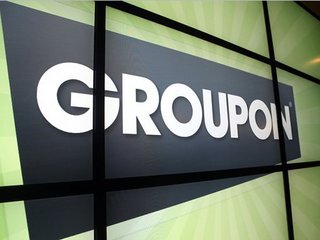Global AI in healthcare market expected to rise to $164B by 2030
The market size for 2023 was $10.31 billion
Read more...
On Friday, Zulily became the first daily deals company to go public since Groupon’s ill-fated IPO in 2011. Remember when everyone was asking LivingSocial when they would go public? Ha, ha, ha…
Zulily rode a wave of consumer Web companies going public in the same week. There was Twitter, of course, and then Chegg. RetailMeNot went public back in July, and its stock is up more than 50%.
Come to think of it, a lot of the 2013 IPOs seem to be doing better than the 2011 cohort. That’s definitely true for Zulily when compared with Groupon.
While Groupon’s IPO was considered a success at the time (shares were initially priced at $20 and closed at $26 on the first day of trading), the company has seen its market cap plummet from some $17 billion to $6.4 billion today. Earlier this year, shares bottomed out at $2.75 and are now up to $9.80—and that’s only after ousting Andrew Mason and installing Eric Lefkofsky as CEO. The company still isn’t out of the woods yet.
Will Zulily simply be a repeat of the Groupon story? Probably not, and here’s why:
1) It’s profitable.
Groupon was hemorrhaging money when it went public. The company was generating tons of revenue, but was funneling all of that money and then some into sky-high marketing costs. In the first nine months of 2011, Groupon generated $1.1 billion in revenue while incurring a loss of $214 million.
Zulily, on the other hand, is (slightly) profitable. The company reported a profit of $155,000 on revenue of $438.7 million between January and September 2013. And the company is growing. Net sales for the first nine months of 2013 are up 116% over the same time period in 2012.
2) There are no wonky financials.
Speaking of revenue, Groupon employed some sketchy financial metrics, such as “Adjusted CSOI”—a metric that didn’t take marketing costs into account, even though they were enormous. By GAAP (generally accepted accounting practices) measures, Groupon lost $413.4 million in 2010 and $113.9 million in the first three months of 2011. But by its Adjusted CSOI measure, it had generated a profit of $81.6 million in the first three months of 2011.
There was also the fact that Groupon initially lumped gross billings in with revenue, which artificially puffed up its numbers, until the company was called out for including merchant share of each deal with its own cut.
Meanwhile, Zulily’s non-GAAP financial metrics are pretty standard, including only net revenue and excluding billings. Zulily’s Adjusted EBITDA doesn’t reflect changes in working capital needs or tax payments, etc.
3) The founders have way more experience than Andrew Mason did.
Andrew Mason had never run a company before. He hadn’t even majored in business or technology. He was a music major (not that that’s a bad thing—but you’d expect a music major to maybe start a music-based company or something).
Zulily’s founders, on the other hand, come with well over a decade of experience. CEO Darrell Cavens and Chairman Mark Vadon maintain a working business partnership that spans over a decade, starting with their first company, Blue Nile. The diamond retailer was founded in 1999 and went public in 2004, so Cavens and Vadon not only know how to run a company, but how to run a public company.
4) The business model is sustainable.
There were a few problems with Groupon’s model before it went public. For starters, there was a lot of concern over the fact that Groupon customers were more thrill-seeking than deal-seeking. Merchants, particularly restaurateurs, were complaining that customers were buying a groupon deal and showing up once, never to return again—which ultimately defeated Groupon’s whole purpose as a local commerce marketing service. But there was also the problem with inactive subscribers. In the quarter before its IPO, it had 143 million subscribers but only 30 million had purchased a groupon deal.
Meanwhile, Zulily’s repeat customer base is thriving. In the first nine months of 2013, Zulily had 2.6 million customers who placed a total of 9.3 million orders at an average of $54 each. Why? Because kids always need shit. LOTS of shit. And Zulily is constantly refreshing the list of retailers it works with. To date, it has worked with over 12,000 brands and sold over 51 million items.
So can we expect better things from Zulily than Groupon? After putting the two companies in a side-by-side comparison, the answer is a definite yes. Next up: Gilt Groupe.
The market size for 2023 was $10.31 billion
Read more...At Culture, Religion & Tech, take II in Miami on October 29, 2024
Read more...The company will use the funding to broaden the scope of its AI, including new administrative tasks
Read more...


